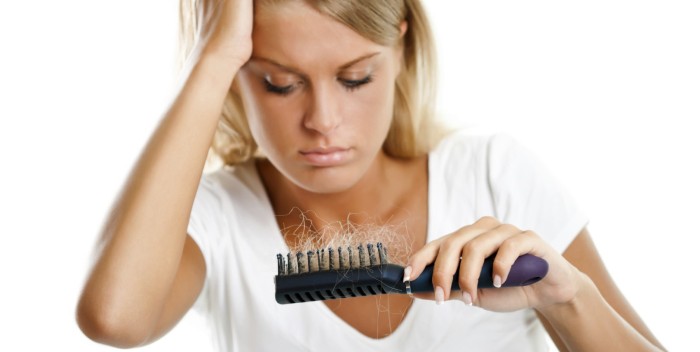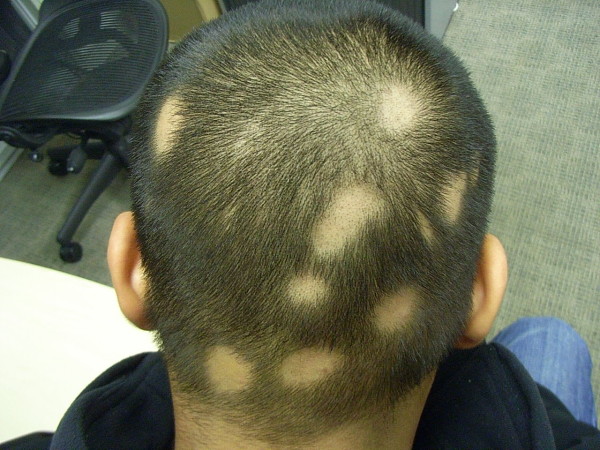Alopecia: causes, symptoms, treatment
Alopecia, or simply baldness, is a rather unpleasant disease in which a person's hair falls out and new ones stop growing. This disease occurs in both men and women and often becomes the cause of the formation of psychological complexes and a decrease in the quality of life.
Causes of alopecia
This disease is widespread enough. At the same time, hair can begin to fall out not only on the head, but also on other parts of the body. The disease can even begin in a child as a complication. atopic dermatitis.
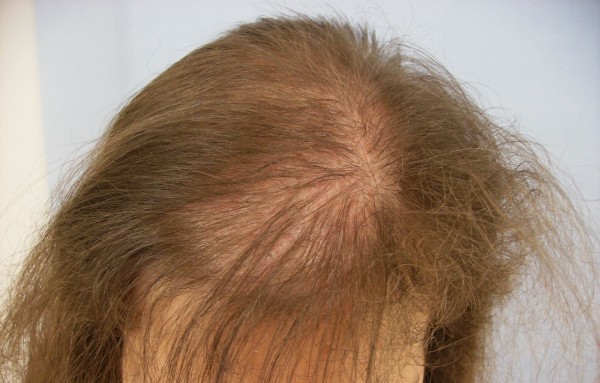 Alopecia is a complex pathology that is caused by a wide variety of reasons:
Alopecia is a complex pathology that is caused by a wide variety of reasons:
- In the presence of a hormonal imbalance. This condition is typical for diseases of the endocrine system, with fungal skin lesions, with menopause or pregnancy in women.
- A variety of skin injuries resulting from mechanical damage, burns, exposure to chemicals or radiation.
- Hereditary predisposition.
- In men, baldness can be caused by too high testosterone levels in the body.
- Constant exposure to stress, depression, nervous breakdowns and more.
- Excessive smoking and alcohol consumption, as well as inadequate and unbalanced diet.
- The reaction of the immune system to any stimulus. At the same time, the mechanism of alopecia in this case remains unclear until the end. Hair regains its growth after the stimulus wears off.
Symptoms of alopecia
Signs of this ailment can manifest themselves in different ways. Most often, the specific picture depends on what the disease is caused by. Hair can begin to fall out suddenly and very quickly, but this process can also occur slowly. Sometimes alopecia spreads not only to the scalp, but also to seize other areas of the body. In some cases, baldness is temporary, while in others the hair will no longer grow back.
The most common symptoms of alopecia are:
- Bald spots of a different nature. They can be in the form of spots, with round or even edges. Moreover, their size can be more than 2 centimeters in diameter. Such bald spots usually appear on the head, but sometimes they occur in the beard or eyebrow area. Moreover, in some cases, a person may experience itching and pain.
- Hair gradually, but very quickly becomes thin. This type of baldness occurs most often. In men, this type of alopecia is manifested by hair loss on the head in the shape of the letter M. Women notice baldness only in the temples.
- Hair quickly becomes weak and are easily detached from the scalp. Most often this occurs as a result of emotional shock. In this case, the hair becomes weak and thin over the entire surface of the head. Bald spots do not appear.
- With serious health effects, such as an overdose of radiation exposure or chemotherapy, hair falls out over the entire surface of the body. In this case, even eyelashes fall out. However, after the cessation of exposure to an irritating factor or treatment, the hairs grow back.
Types of alopecia
There are several types of baldness. In this case, the external symptoms of pathology, which caused its causes and the mechanism of development, are subject to consideration.
If the hair follicles have undergone a serious violation, then scar alopecia occurs. Most often, such a violation occurs as a result of inflammation, scarring or atrophic changes in the scalp. A scar forms on the skin, and the hair follicles die completely. This process, unfortunately, is not reversible.
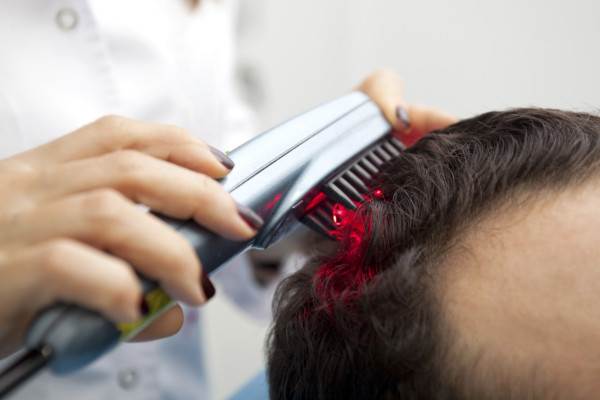 In women, as a result of hormonal changes during menopause, pregnancy, during the onset of puberty, sometimes diffuse alopecia occurs. In this case, hair begins to fall out over the entire surface of the head. This process happens quickly enough, but complete hair loss does not happen.
In women, as a result of hormonal changes during menopause, pregnancy, during the onset of puberty, sometimes diffuse alopecia occurs. In this case, hair begins to fall out over the entire surface of the head. This process happens quickly enough, but complete hair loss does not happen.
In some people, hair loss becomes patchy. Usually, small round bald patches form in the back of the head. They gradually grow and merge with each other. Then hair loss stops, and after that they start to grow again.
Most often, baldness is androgenic in nature. In this case, a combination of alopecia and oily seborrhea is very often observed. This condition is hereditary.
Alopecia treatment
Hair loss is very difficult to treat. But with a timely request for help, it is possible to restore the hair. An experienced trichologist will help determine the cause of alopecia and prescribe the necessary treatment. It will depend on the type of disease.
To eliminate androgenic alopecia, it is necessary to suppress the effects of androgen. For this, the drug Mnoxidil is prescribed. At the same time, men are prescribed this remedy in 5% concentration, and for women, the concentration should be 2-5%. This remedy is used twice a day. Regular use of the drug for 4 months allows you to stop the disease and even resume the growth of new hair.
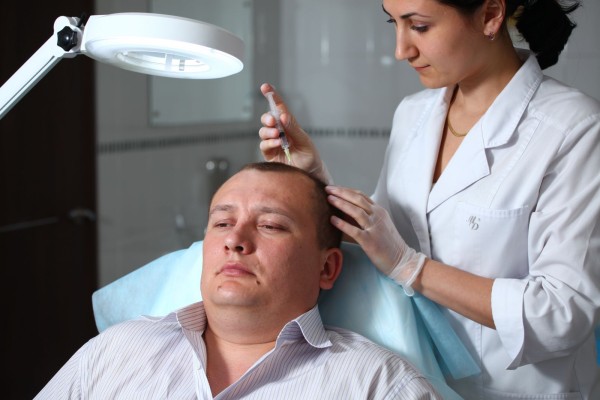 Treatment of diffuse hair loss should be associated with identifying the cause. So in the presence of endocrine diseases, they must be cured. If your hair is falling out due to medication, then you need to think about replacing it. In case of improper nutrition, diet or vegetarianism, proper nutrition should be restored, mineral complexes should be drunk. Once the cause of baldness has been eliminated, various treatments can be used to stimulate new hair growth. These can be shampoos, tonics or physiotherapy.
Treatment of diffuse hair loss should be associated with identifying the cause. So in the presence of endocrine diseases, they must be cured. If your hair is falling out due to medication, then you need to think about replacing it. In case of improper nutrition, diet or vegetarianism, proper nutrition should be restored, mineral complexes should be drunk. Once the cause of baldness has been eliminated, various treatments can be used to stimulate new hair growth. These can be shampoos, tonics or physiotherapy.
To cure focal hair loss, complex therapy is used. Here it is appropriate to use glucocorticosteroids, irritating topical preparations, as well as drugs that stimulate the process of hair growth. In addition, you can apply a variety of physiotherapy procedures.
To eliminate cicatricial alopecia, there is only one effective method of treatment - surgical. In this case, the hair is transplanted either in patches or as separate follicles. In the first case, skin flaps are taken from the back of a person's head. After engraftment, the hair begins to grow on its own. If baldness occurs in a small area, then it makes sense to transplant the hair separately. In this case, the transplant is experienced less traumatic.
